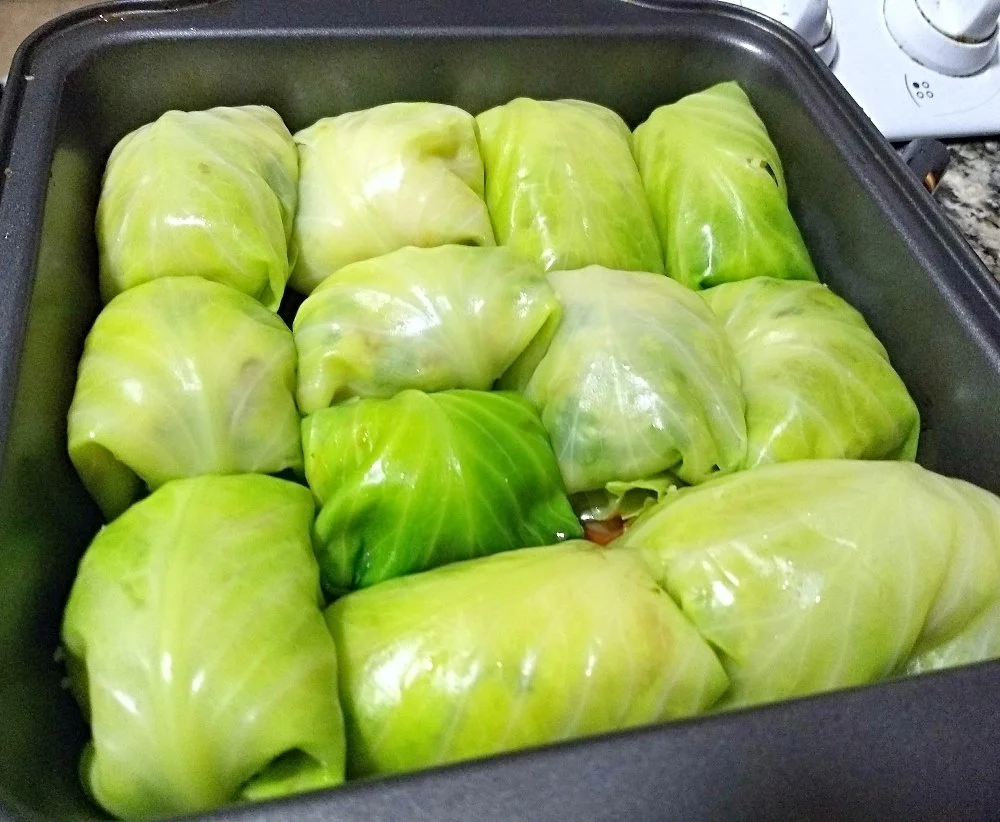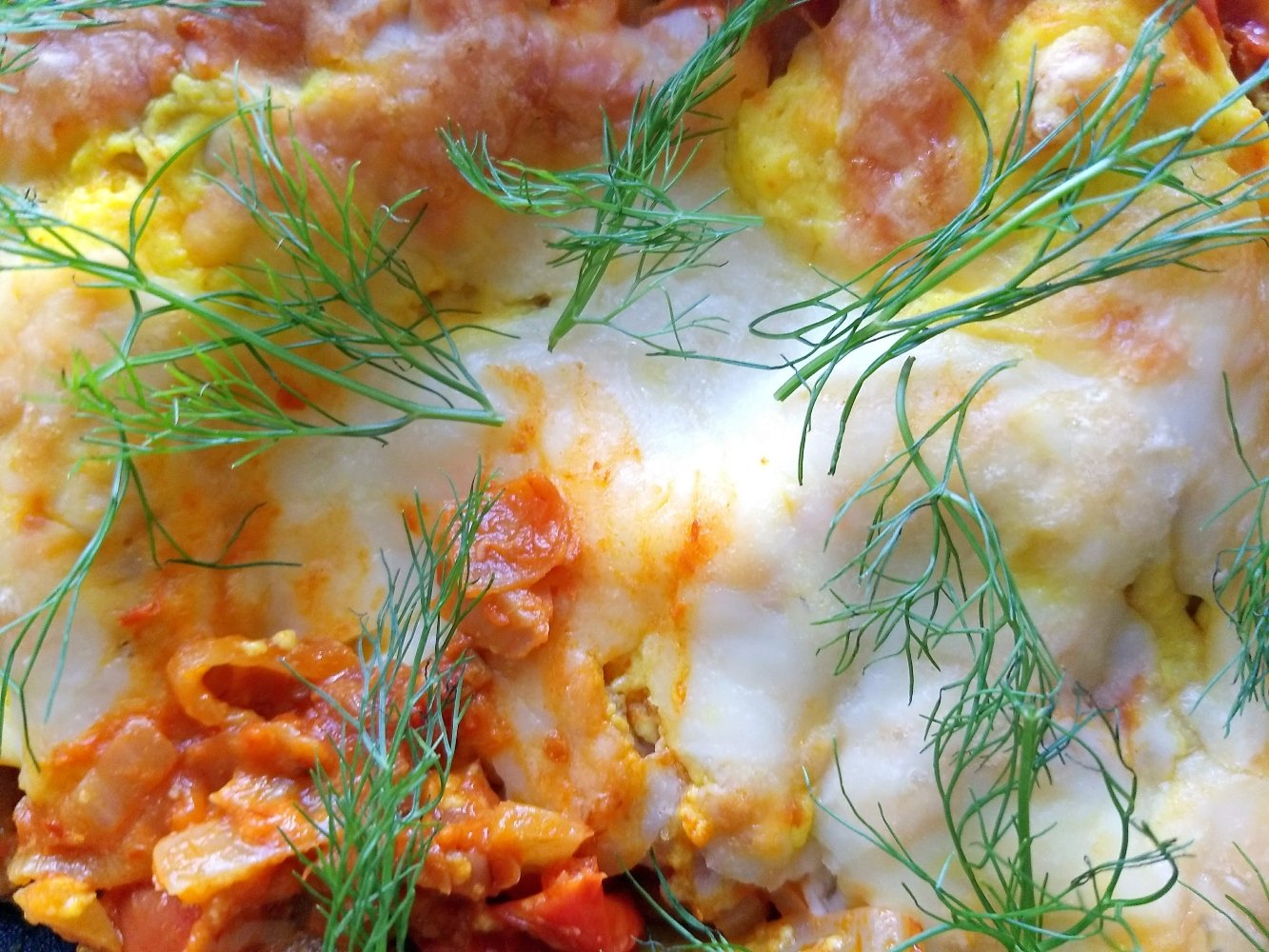Vegan Couscous Cabbage Rolls with Spicy Harissa Sauce
Couscous has got to be one of the most famous Moroccan foods, and since I moved to Morocco, I’ve been trying out different ways of cooking it. I know some people think it’s kind of plain and boring, but it’s probably one of my favorite parts of Moroccan cuisine. I like the texture and it’s just kind of comforting, you know? Or maybe it’s because it’s basically a very small pasta, and, like any other regular human being, pasta is my life. #carblife
That’s right: couscous is not, in fact, a type of grain, though it does resemble one. Rather, it’s tiny little bits of rolled semolina dough. Semolina is a coarse variety of flour which most dried pasta is made from; therefore, it is tiny pasta.
Cabbage rolls may not be known as a carb vehicle, but they can be with the right attitude–and that is a ‘tude I can do. I love vegan cabbage rolls, and back in the States, I would usually make them with a TVP (textured vegetable protein) and rice filling. TVP is cheap, versatile, and, of course, high in protein.
However, I haven’t seen TVP for sale here in Morocco, and I kind of doubt it would be cheap if I could find it. That’s unfortunately the case for a lot of the usual high-protein vegan foods like tofu, tempeh, and seitan (I actually started making my own seitan and it’s pretty fun). So, I decided to make a Moroccan-inspired version of cabbage rolls with a couscous filling.
I love coming up with recipes that use Moroccan ingredients, like my Spicy Fennel and Turmeric Bechamel Lasagna, or Olive Tapenade Cacio e Pepe.
Couscous filling for the rolls.
For the couscous filling, I add chopped green olives, a mix of fresh herbs, and caramelized onions. Olives are served with pretty much every Moroccan meal and are one of my favorite foods, so I wanted to include them in my cabbage rolls. Couscous is often served with caramelized onions and they add so much flavor–and cooking time, but it’s worth it! For the fresh herb mix, I use mint, cilantro, and parsley, which are all common in Moroccan cooking.
Making the roll.
Notes on the ingredients and method:
Cabbage: I use just the regular green cabbage ubiquitous here in Morocco. Whatever standard cabbage head you can pick up at the store should be fine. Cut off the stems and any really thick parts of the leaf at the bottom (the leaves closer to the outside are thicker). I boil my cabbage leaves beforehand for longer than most recipes I’ve seen say to, just because they should be really tender and these cabbage rolls don’t need to be baked as long as traditional ones.
Pan: Depending on the size of the cabbage leaves, you might be able to fit 10-14 rolls in an 8x8 square pan like mine. Alternatively, you can use a standard 9 inch round cake pan.
Couscous: There are different sizes of couscous. I like the texture of the fine variety. Depending on where you are, that might be your only option other than the much larger pearl couscous.
Vegetable broth: This adds a lot of flavor to the couscous! If you’re not vegetarian, you can sub chicken broth.
Herb mix: Mint, cilantro, and parsley are common in Moroccan cooking and go very well here. If you don’t have all three, you could use two together or even one, though I recommend adding less of the herb if you only use one, especially if you only use mint. Otherwise, it could end up tasting overpowering. If you don’t have any fresh herbs, you can use a couple tablespoons total of dry herbs mixed into the dry couscous before cooking, but it won’t add as much flavor. Better than nothing, though!
Spices: There are a lot of different varieties of harissa here in Morocco, but depending on where you live, you might not have many options. The one I like to use for this recipe is pretty strong and has cumin in it; if yours is a more straightforward peppery harissa, then I recommend adding some cumin to the sauce at the same time as the garlic. Depending on your harissa and your personal preference, you might add more or less for a stronger, spicier tomato sauce. Keep in mind harissa is pretty salty, so don’t add more than 2 tablespoons. If you still want it spicier, add some cayenne!
Caramelized onions: Making caramelized onions takes forever, but let’s be honest here: this recipe is not of the quick and easy weeknight variety. It takes time to prepare all the ingredients, so you can easily have the onions cooking while you’re chopping, boiling the cabbage, and making the couscous and sauce.
Recipe:

Vegan Couscous Cabbage Rolls with Spicy Harissa Sauce
Ingredients
Instructions
- Start by caramelizing the onion. This usually takes me at least 45 minutes, but often about an hour. Heat two tablespoons of olive oil in a skillet over medium-low heat and then add the chopped onion. Stir them around to evenly distribute around the pan. Work on the rest of the recipe while the onions cook, making sure you stir them every few minutes so they don't burn. Around 30 minutes in, they might start drying out. I add about a quarter cup of water at this point and more as needed for the rest of the cook time. You could add vegetable broth instead for some extra flavor.
- While the onion is cooking, make the couscous. In a saucepan, heat the remaining tablespoon of olive oil over medium heat, then add the dry couscous. Toast the couscous, stirring frequently with a spatula or wooden spoon, for about 5 minutes. Turn the heat off and add the hot vegetable broth, then cover with a lid and let sit for ten minutes.
- Boil a large pot of water and add your cabbage leaves (you may have to boil them in batches of two or three). Boil for 7-10 minutes, depending on how many you fit in there and how thick your leaves are. They need to be soft but not falling apart, as these cabbage rolls don't cook as long as other kinds. When ready, remove the leaves from the water with tongs or a fork and let cool.
- When the couscous is ready, take off the lid and fluff it with a fork. Add herbs, caramelized onions, olives, and salt. Mix together thoroughly.
- Preheat oven to 425 degrees around this point.
- When the cabbage is cool enough to handle, you can create the rolls. Hold the leaf in your hand, add 1/4-1/3 cup couscous mixture. Fold the "top" and "bottom" sides down, then fold the side in tightly to create a roll.
- Heat the olive oil in a skillet over medium-high heat. Add the garlic and cook until just starting to turn golden, 1-2 minutes.
- Add the harissa paste and stir, cooking for another 1-2 minutes.
- Add the tomato sauce (being careful of any splatter) and stir to combine the ingredients. Keep stirring, cooking the sauce until it has reduced and has a slightly caramelized taste, 3-4 minutes. Add salt if needed and remove from heat.
- Add about 1/3 cup of the harissa tomato sauce to 9 inch round pan or 8x8 inch square pan and distribute it in a thin layer across the bottom.
- Assemble your 10-14 cabbage rolls in the pan. They should be snug!
- Pour the remaining sauce over the top of the rolls, using your spatula to spread it over as evenly as possible.
- Bake in the oven for 20-25 minutes.










